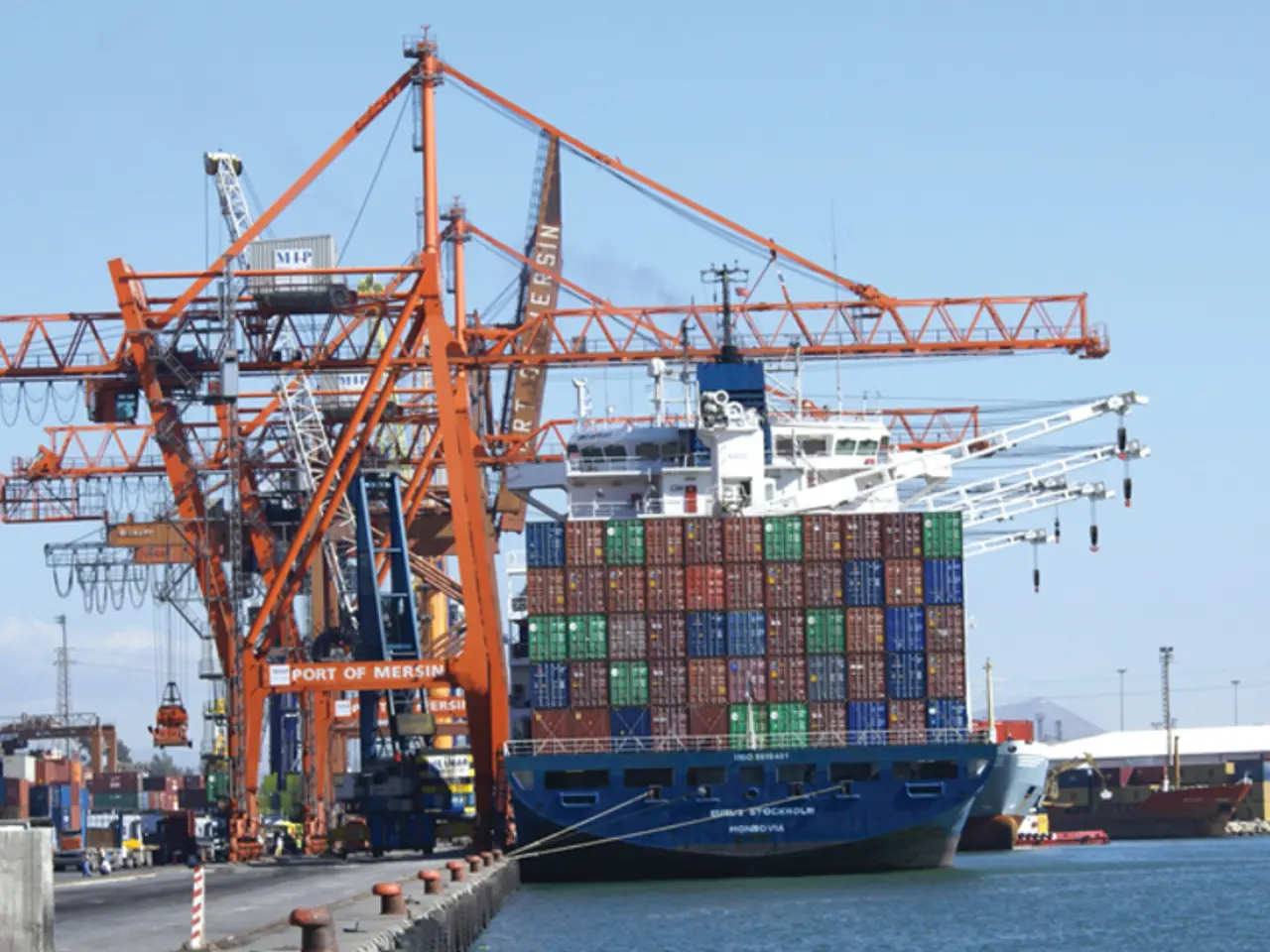Exploring Trade Equilibrium: Defining, Evaluating, and demonstrating with cases
The balance of trade, a crucial aspect of a country's economic health, is the difference between its exports and imports of goods and services. It is part of the broader balance of payments, which records all international economic transactions made by a country's residents.
A country with a trade surplus, where the value of its exports exceeds the value of its imports, enjoys a positive inflow of money. Conversely, a trade deficit, characterised by higher imports than exports, indicates an outflow of funds.
Several factors influence a country's balance of trade. Natural resources and production capacity shape what a country can produce and export. Countries rich in natural resources tend to export raw materials, while those with skilled labor focus on manufactured or technological goods. This specialization influences trade patterns and the balance of trade.
Currency exchange rates also play a significant role. A stronger currency makes exports more expensive and imports cheaper, potentially leading to a trade deficit. On the other hand, a weaker currency can boost exports by making them cheaper for foreign buyers but raises import costs.
Inflation and relative prices also impact the balance of trade. Higher inflation reduces export competitiveness and can worsen trade deficits by making domestic goods more expensive relative to foreign goods.
Domestic and foreign income levels also influence the balance of trade. Higher domestic income increases demand for imports, while higher foreign income boosts exports. Trade policies and tariffs can temporarily improve the trade balance, but their effectiveness is limited and can provoke trade wars that harm economic growth.
Capital flows and foreign investment can cause persistent trade deficits by strengthening the currency and financing imports. The U.S. example shows how foreign investment attractiveness influences trade balances beyond trade barriers.
The impact on economic health depends on the balance context. A trade surplus generally reflects strong export performance, supporting economic growth, employment, and currency strength. On the other hand, a trade deficit may reflect strong domestic demand and investment aimed at future growth. However, persistent deficits financed by external debt can pose risks like currency depreciation or debt servicing burdens, potentially harming economic stability.
A country can shift from a trade deficit to a surplus by investing heavily in export-oriented manufacturing or extracting industries, placing tariffs on imported goods, or devaluing the country's currency. During times of economic expansion, countries have a great appetite for imports and may use them to increase price competition, which limits inflation. During a recession, countries aim to export more to create jobs and boost economic demand.
In conclusion, the balance of trade is a dynamic outcome shaped by production capabilities, currency valuation, inflation, income levels, and policy decisions. Its health impact depends on the underlying causes—investment and growth potential tend to be positive, while unbalanced deficits without productive investment may signal vulnerabilities.
In the realm of modern finance and business, the surge of decentralized finance (defi) has introduced a new realm of trading. Within this space, unique tokens represent various assets, and their exchange value reflects the balance in the defi market (trading).
Moreover, just as traditional finance, the defi ecosystem depends on these factors influencing trade patterns: production capacity, currency valuation, inflation, income levels, and policy decisions. Further, the health of this defi economy can be positively affected by strong investment and growth potential but may signal vulnerabilities when unbalanced deficits without productive investment persist.




